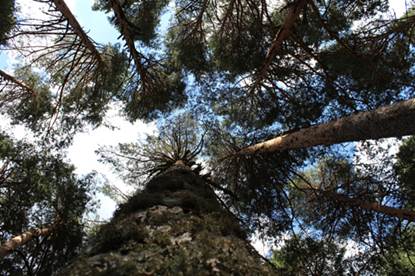European pines adapt to climatic variations, study finds
Wild pines (Pinus sylvestris) have different characteristics depending on their area of distribution in Europe, which will make it possible to determine which populations have a better chance of survival in a climate crisis scenario, according to a study published in the Journal of Ecology.
The research, of a European nature and in which the Universidad Rey Juan Carlos (URJC) and the Museo Nacional de Ciencias Naturales (MNCN-CSIC) have participated, has analysed the characteristics of 500 specimens from different populations, according to a press release provided by these entities.
This examination has shown that pines from central Europe have more competitive characteristics, such as larger size and more productive leaves, while those from peripheral regions are more conservative, with smaller plant and leaf size.
The MNCN-CSIC researcher and first author of the article, Raquel Benavides, explained that the analysis explores "the role of phenotypic integration - that is, the structure of covariation between traits - in the response of this species to environmental gradients at different scales" from Mediterranean mountains to boreal forests.
Adrián Escudero, researcher at the URJC's Biodiversity and Conservation department, added that "within a region, traits are more integrated in unfavourable environments along the entire climatic gradient", so that "the most stressful conditions filter out those combinations of traits that maximise the persistence of the individual in these conditions".
Understanding phenotypic integration "will help to predict the response of species to environmental changes and to anticipate management measures in response to them," says Silvia Matesanz, a researcher in the Biodiversity and Conservation area of the URJC.
The Centro de Estudos Florestais de la Universidade de Lisboa (Portugal), the Centre d'Ecologie Fonctionnelle & Evolutive de Montpellier (France), the Centre for Ecology & Hydrology (United Kingdom) and the Swiss Institute for Forest, Snow and Landscape Research WSL (Switzerland) have also participated in the research.
Original article from EFE Verde.
Translated with www.DeepL.com/Translator
